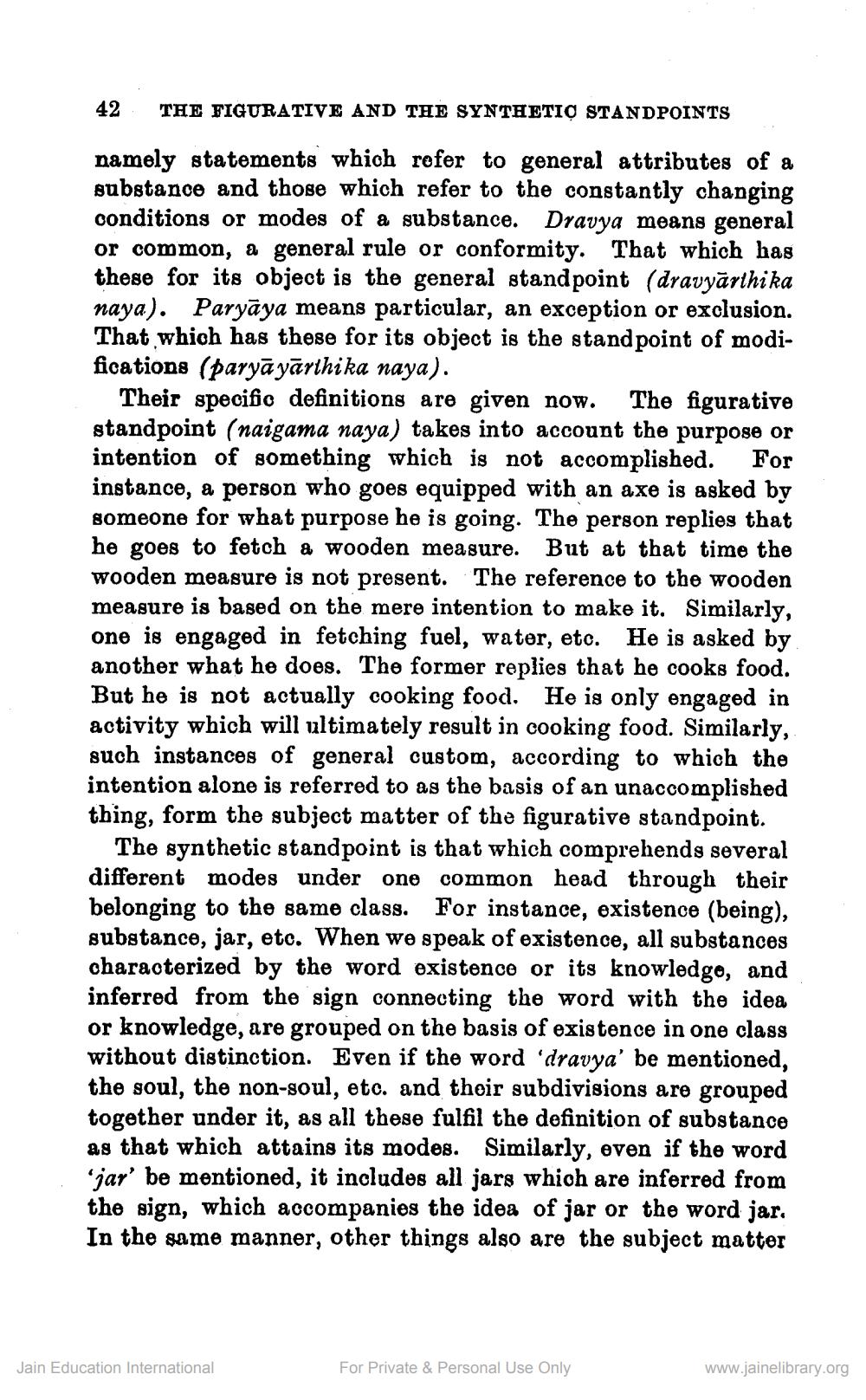________________
42 THE FIGURATIVE AND THE SYNTHETIỢ STANDPOINTS namely statements which refer to general attributes of a substance and those which refer to the constantly changing conditions or modes of a substance. Dravya means general or common, a general rule or conformity. That which has these for its object is the general standpoint (dravyārthika naya). Paryāya means particular, an exception or exclusion. That which has these for its object is the stand point of modifications (paryāyārthika naya).
Their specifio definitions are given now. The figurative standpoint (naigama naya) takes into account the purpose or intention of something which is not accomplished. For instance, a person who goes equipped with an axe is asked by someone for what purpose he is going. The person replies that he goes to fetch a wooden measure. But at that time the wooden measure is not present. The reference to the wooden measure is based on the mere intention to make it. Similarly, one is engaged in fetching fuel, water, etc. He is asked by another what he does. The former replies that he cooks food. But he is not actually cooking food. He is only engaged in activity which will ultimately result in cooking food. Similarly, such instances of general custom, according to which the intention alone is referred to as the basis of an unaccomplished thing, form the subject matter of the figurative standpoint.
The synthetic standpoint is that which comprehends several different modes under one common head through their belonging to the same class. For instance, existence (being), substance, jar, etc. When we speak of existence, all substances characterized by the word existence or its knowledge, and inferred from the sign connecting the word with the idea or knowledge, are grouped on the basis of existence in one class without distinction. Even if the word 'dravya' be mentioned, the soul, the non-soul, etc. and their subdivisions are grouped together under it, as all these fulfil the definition of substance as that which attains its modes. Similarly, even if the word jar' be mentioned, it includes all jars which are inferred from the sign, which accompanies the idea of jar or the word jar. In the same manner, other things also are the subject matter
Jain Education International
For Private & Personal Use Only
www.jainelibrary.org




